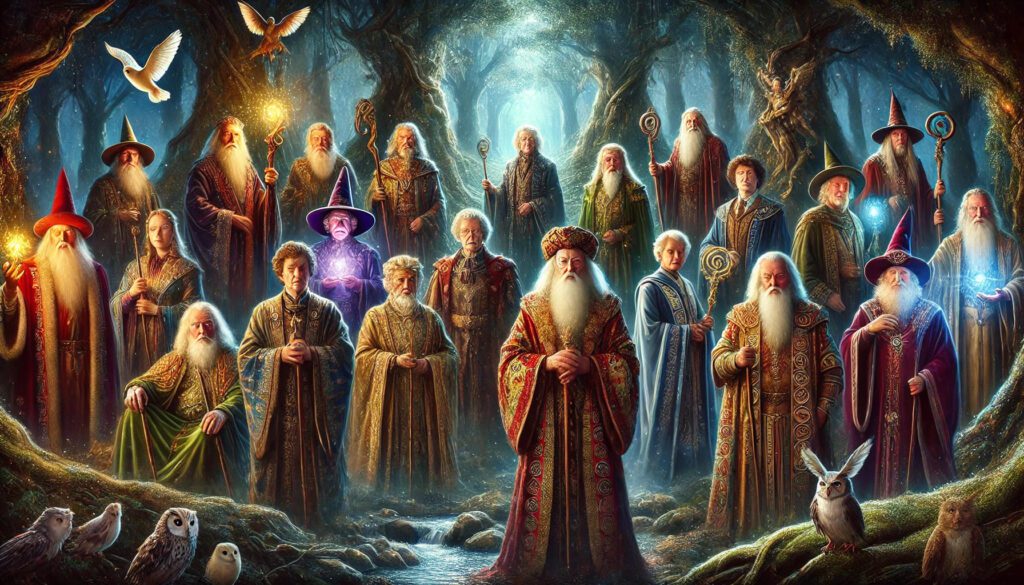Famous Wizards at a Glance
| Name | Origin | Known For | Notable Traits |
|---|---|---|---|
| Merlin | Arthurian Legend | Advisor to King Arthur | Prophecy, shape-shifting, ancient wisdom |
| Gandalf | The Lord of the Rings | Guiding the Fellowship | Elemental magic, immortality, humility |
| Dumbledore | Harry Potter | Headmaster of Hogwarts | Wisdom, powerful spellcasting, compassion |
| Doctor Strange | Marvel Comics | Sorcerer Supreme | Astral projection, time manipulation |
| Morgana le Fay | Arthurian Legend | Half-sister of Arthur | Healing, shape-shifting, morally complex |
| Harry Potter | Harry Potter | The Boy Who Lived | Bravery, self-sacrifice, leadership |
| Saruman | The Lord of the Rings | Fallen Istari wizard | Corruption, speechcraft, betrayal |
| Prospero | Shakespeare’s The Tempest | Duke of Milan | Control over spirits and nature |
| Circe | Greek Mythology | Turns men into animals | Seduction, transformation magic |
| Ged | Earthsea Series | Archmage of Roke | Balance, humility, name-based magic |
| Wizard of Oz | L. Frank Baum | Illusionist behind the curtain | Trickery, symbolic wisdom |
| Baba Yaga | Slavic Folklore | Forest-dwelling witch | Ambiguous morality, death/rebirth themes |
| Zatanna | DC Comics | Justice League magician | Stage magic + real spells, backward incantations |
Meet the Most Famous Wizards
Merlin: The Original Magician

Merlin is most likely the most famous wizard in Western mythology and is known primarily from Arthurian legends. He functions as an advisor and mentor to King Arthur, guiding him with his knowledge and magical powers. Merlin’s character combines historical and mythological elements from early Welsh and British sources. Often portrayed as an old man with a long beard who wears robes and carries a staff.
Prophecy, shapeshifting, and powerful enchantments are among the many abilities that Merlin possesses. He plays a central role in stories about Camelot, the Holy Grail, and the Knights of the Round Table. His relationship with Arthur as well as other characters such as Morgan le Fay adds depth to his personality.
Gandalf: The Savior of Middle-earth
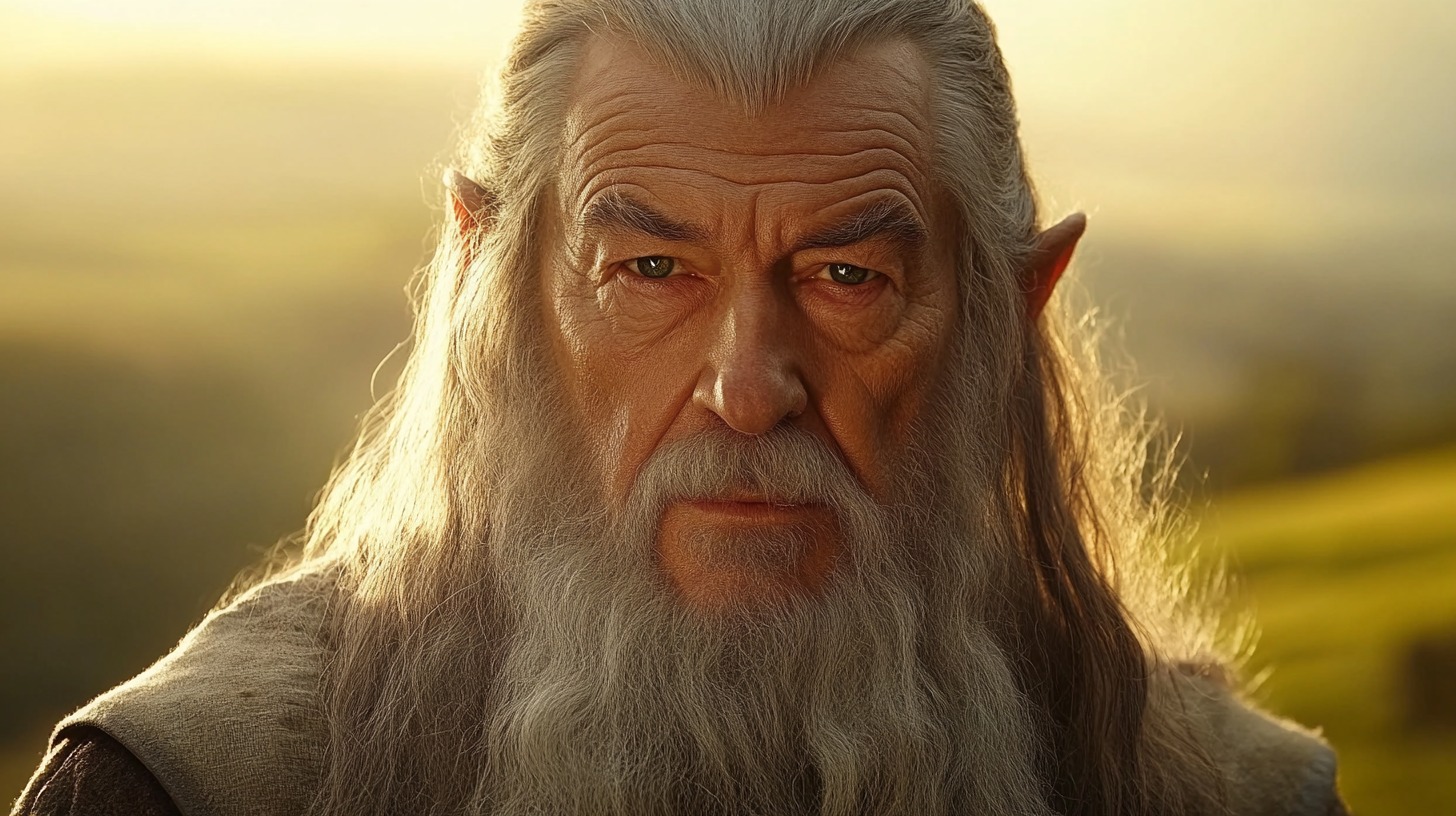
Gandalf appears in both The Hobbit and The Lord of the Rings by J.R.R. Tolkien. He is one of five Istari or wizards sent by Valar to help the free peoples of Middle-earth fight against Sauron. Known for his wisdom, courage, and strong magic powers (which he usually channels through his staff).
The defeat of Sauron would not have been possible without Gandalf, who led Frodo Baggins, Aragorn, and others from the Fellowship through Mordor into Mount Doom where the One Ring was destroyed, forever transforming him into Gandalf the White, symbolizing rebirth and increased strength. He influenced wise mentors like Beowulf’s Hrothgar and Sir Gawain’s Green Knight along with powerful guardianship figures found throughout various mythologies.
Dumbledore: The Keeper of Hogwarts
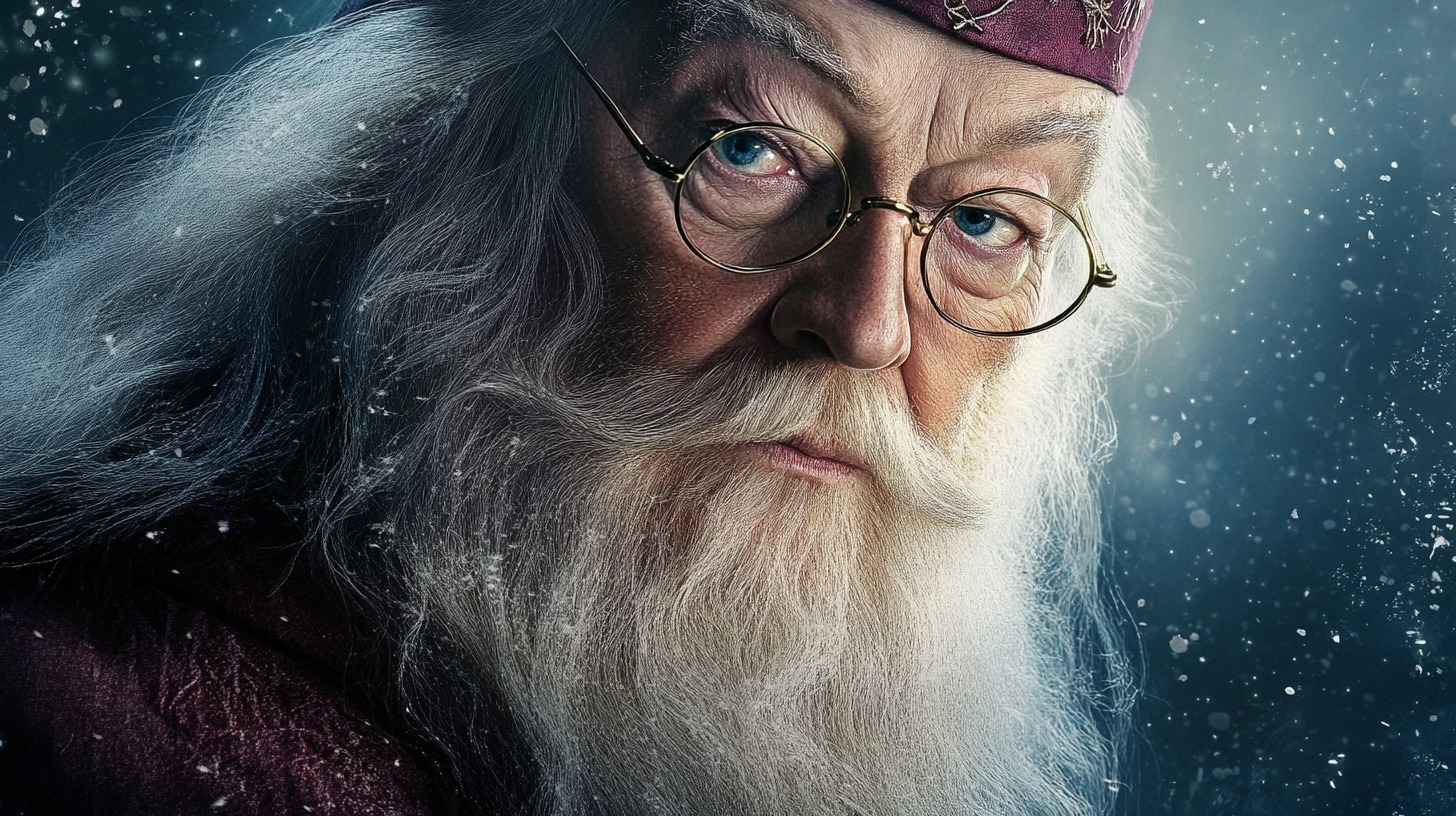
Albus Dumbledore is one of the main characters in J.K. Rowling’s Harry Potter series. As headmaster of Hogwarts School of Witchcraft and Wizardry, he mentors a young wizard named Harry who eventually becomes a key player against the dark lord Voldemort. Dumbledore possesses vast magical knowledge combined with deep empathy, making him both wise and powerful.
When it comes to casting spells, transfiguring objects, or using artifacts such as the Elder Wand, nobody does better than Dumbledore. However, not much is known about his early life except for a complicated friendship turned rivalry with Gellert Grindelwald during their youth, which reflects back on his character.
Saruman: The Failed Wizard
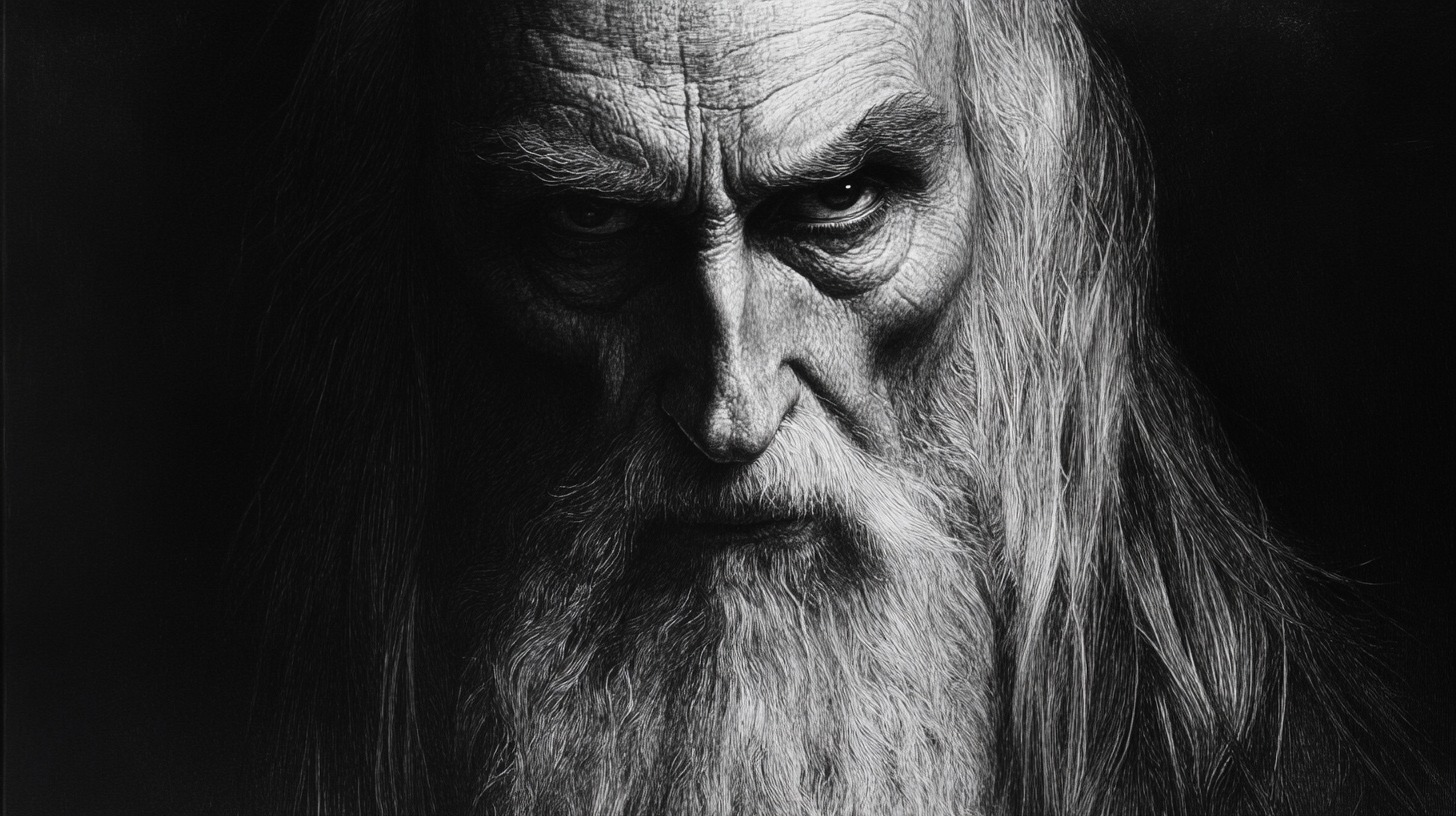
Saruman, also referred to as Saruman the White, serves as one of the main villains in J.R.R. Tolkien’s The Lord of the Rings trilogy. At first, he stands at the head of the Istari group of wizards sent to Middle-earth to fight against Sauron, but later falls into corruption due to wanting more power than he could have, even betraying former allies.
Saruman has an affinity for influencing people’s minds through speech while being quite skilled when it comes to casting magic spells himself. He tends to control others around him, especially those weaker-willed ones like the Uruk-hai, whom he creates a large army of to help conquer all of Middle-earth. His downfall can be seen as a cautionary tale about the corrupting nature of power.
Morgana le Fay: The Sorceress
Morgan le Fay, also known as Morgana and Morgan, is a mighty magician of the Arthurian Legend. She has often been presented as an enemy as well as a multi-dimensional character acting on her own desires. Frequently depicted as King Arthur’s half-sister and Merlin’s former student with whom she shares turbulent associations.
Healing, shape-shifting, and potent enchantments are some of her powers. Different accounts portray Morgana differently; in some myths, she can be seen as a villain who wants to destroy King Arthur and his kingdom, while in others she is more complex, driven by personal grudges and thirsts for fairness. Through her personage, questions are raised about power, revenge, and at what point someone becomes good or evil.
Harry Potter: The Chosen One
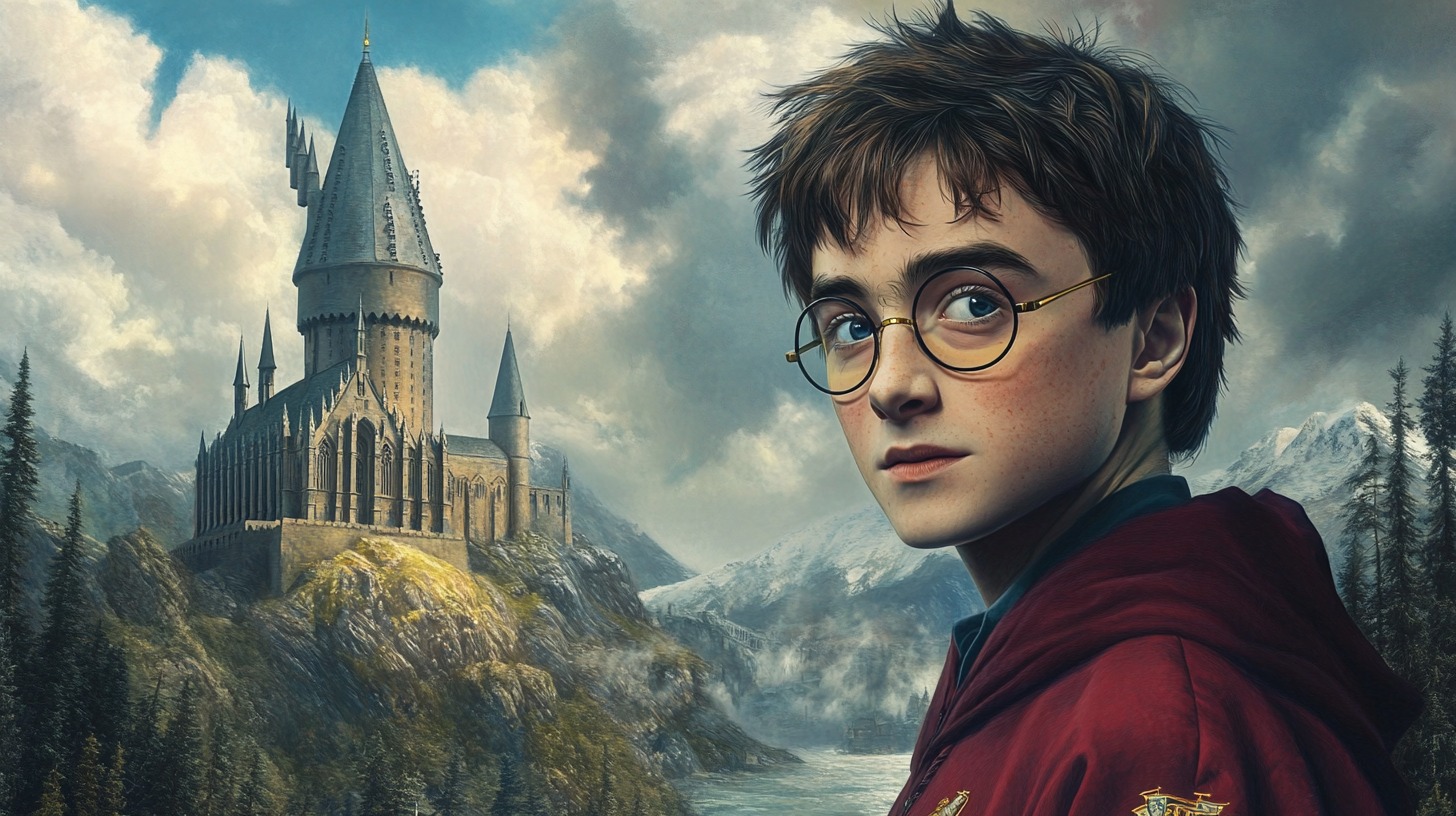
Harry Potter, the main protagonist of J.K. Rowling’s series, is one of the most famous wizards in modern literature known for being “The Boy Who Lived.” He survives a lethal curse cast upon him by Lord Voldemort when he was just an infant, setting off on his journey as a young wizard.
Throughout his education at Hogwarts School of Witchcraft & Wizardry, we see Harry grow from being inexperienced to becoming powerful enough to face great challenges head-on. With bravery, loyalty, and a strong sense of justice, he naturally becomes a leader, making him heroic in every way possible. He struggles with self-identity, friendship ties, and battling against Voldemort, bringing out the best in his character. It’s a story of love and sacrifice against tyranny.
Radagast: The Wizard of Nature
Radagast the Brown is another one of J.R.R. Tolkien’s Istari in the Middle-earth legendarium. He differs from Gandalf and Saruman due to his close relationship with animals and nature. He dwells within Middle-earth’s woodlands, which act as a home base for communication between birds, beasts, and other creatures.
Radagast is mainly centered around natural magic, such as plant healing and beast speech, among others. It’s all about living harmoniously with the environment. Even though he is not heavily involved in the major events within the Middle-earth storyline, his presence shows that some wizards are just like this guy – you know what I mean, right?
Doctor Strange: The Wizard Supreme
In the Marvel Comics universe, Doctor Stephen Strange, better known as Doctor Strange, is a superhero and a master of the mystical arts. He was created by writer Stan Lee and artist Steve Ditko. A brilliant but arrogant neurosurgeon at first, Doctor Strange’s career was cut short after his hands were damaged in a car crash. Following this incident, he goes on an adventure to find a cure which leads him to the Ancient One, an all-powerful sorcerer.
Underneath the Ancient One’s guidance, he becomes Earth’s primary protector against magical and mystic threats as Sorcerer Supreme. His powers include spell casting, astral projection, time manipulation, and traveling through different dimensions, among others. Doctor Strange stories often mix elements from fantasy with horror or science fiction, making him one of today’s most unique characters across various media platforms.
Zatanna: The Enchantress of Magic
In DC Comics’ universe, Zatanna Zatara is not only a powerful magician but also a superheroine character. Her father, Giovanni Zatara, was a world-famous illusionist, so she has inherited his magical abilities too. Backward speaking spells are her trademark move along with spell casting, telekinesis, and teleportation, among others.
She belongs to the Justice League, frequently joining forces with other superheroes to fight against supernatural threats where magic is involved. This way, she brings together stage performance illusions with genuine supernatural powers, making her different from any other person seen within comic books. Also called “Mistress of Magic,” she can control elements through speaking words and phrases backward.
Prospero: The Magician from The Tempest
Prospero is the main character in William Shakespeare’s play The Tempest. As the Duke of Milan, he was overthrown by his brother Antonio and set adrift on an island. Prospero uses his magical knowledge to command spirits such as Ariel found on this island to help him get back his title as duke and reunite with his daughter Miranda.
His magic represents both great power exerted over natural world forces or those beyond human understanding. This complexity makes him one of Shakespeare’s most intriguing sorcerers, as different people may see themselves reflected within this particular character.
Circe: The Sorceress of Greek Mythology
In Greek mythology, Circe is a powerful sorceress most famously mentioned by Homer in the Odyssey. She lives on Aeaea, an island where she turns men into animals using her magic powers. When Odysseus comes to Aeaea with his shipmates, Circe changes them into pigs but fails to cast spells on Odysseus himself, who resists her with help from the god Hermes.
Circe embodies both sides of magic – it can be charming as well as dangerous. She often appears beautiful and strong, with the ability to show great kindness or take revenge in equal measure. Her story explores themes such as transformation, seduction, and the blurred lines between human and divine realms.
Ged (Sparrowhawk): The Wizard of Earthsea
Ged, also called Sparrowhawk, is the hero in Ursula K. Le Guin’s Earthsea books. He starts off as an overconfident young man with great natural ability at magic. Throughout the series, Ged becomes an experienced and powerful Archmage. On his journey, he must confront his own demons and learn about power and balance.
In Old Speech, Ged performs magic through words; if you know the true name of something, then it is under your control. His character embodies themes such as finding oneself, modesty or humbleness before greatness, and light against dark forces within us all. This story tells us about personal growth and what happens when people are given too much power without any guidance.
The Wizard of Oz: Behind The Curtain
L. Frank Baum’s The Wonderful Wizard of Oz initially presents the Wizard as a powerful ruler who governs over Emerald City through fear caused by his magical abilities. These abilities were later revealed to be tricks created using mirrors and smoke screens while hiding behind curtains.
Although lacking in actual magic powers himself, this ordinary man from Omaha, Nebraska, played an important role in helping out Dorothy along with her companions find their way back home by enabling them to recognize their individual potentials. This shows that real strength comes from deep inside oneself rather than being dependent on external factors.
Baba Yaga: The Slavic Folklore Witch
Baba Yaga is a scary witch from Russian folklore who lives alone in the forest. Her strange hut stands on chicken legs, and she flies around in a mortar, using a pestle as her rudder. Sometimes helpful, sometimes hindering those that come to see her; Baba Yaga represents both wisdom and danger. She has great powers related to death, life renewal, and wild nature forces among others.
Baba Yaga’s stories serve mainly as moral teachings which stress bravery, cunningness, respect for the environment, and more, while also being entertaining tales for children of all ages (and adults too!). This makes her one of the most famous characters from Slavic mythology because nobody knows what will happen next when dealing with this intriguing lady!
A Brief History of Wizards in Mythology and Fantasy
Wizards’ Origins
For countless ages, wizards have held sway over human minds, entwining themselves with the threads of myth and history. The idea of a wizard – a person who possesses mysterious powers or knowledge – dates back to the dawn of civilization itself. Ancient myths often depicted magicians as wise men or doctors with the ability to talk to gods, control nature, and foretell future events.
In ancient Mesopotamia, there were priests called “asipu” who used rituals and magic words to heal illnesses and drive away evil spirits. Similarly, in ancient Egypt, “heka” practitioners believed that they had been granted magical abilities by the gods themselves. These examples show that people have always believed in supernatural power.
The ancient Greeks had Orpheus, an extraordinary musician whose playing could charm even rocks into dancing; he is often shown as having magic powers. It was through figures like him that Greeks learned about wizards – people who had special skills given by gods.
In Celtic tradition, druids were respected as wise women and men who performed powerful acts of magic. They acted as intermediaries between gods and humans, possessing a deep understanding of natural world forces which they utilized for various purposes including healing; their practices eventually contributed greatly towards European conceptions concerning wizards.
Magicians and Their Magic Artifacts
Staves/Wands/Other Tools
These powerful beings are often seen carrying different magical items which help increase their powers or act as symbols of authority over other creatures that they might come across during their many travels across worlds. These tools are an essential part used in conducting magical acts by every magician but each has a unique history behind them not forgetting properties too because none can be ordinary.
- Staff: Staffs are often associated with wisdom and authority; they are employed by magicians to channel and amplify their magical powers. Gandalf’s staff is a good example: it serves as both a weapon and a conduit for his magic.
- Magic Wands: Magic wands are smaller, more focused instruments of spellcasting. In the Harry Potter series, each wand is unique; its core and wood type influence the wizard’s magical capabilities.
- Orb: Magical orbs (such as crystal balls) are used for scrying or divination. They enable wizards to see far-off places, predict the future, communicate with other dimensions, etc.
- Talismans & Amulets: These items are worn or carried on someone’s person for protection or to increase particular magical abilities. Often contain symbols or runes with supposed mystical power.
Comparing Magicians to Different Supernatural Creatures
Magic Users vs Witches
Usually, wizards and witches are mistaken as one and the same due to their many similarities. Generally, male magicians are portrayed as studious individuals who perform complicated spells. However, females are shown as natural intuitive magic practitioners.
In movies and books, witches commonly belong to covens performing rituals connected with nature and moon phases while wizards are perceived as loners who study ancient texts and mysterious knowledge which may be hidden in them for ages. These two still have something profound in common – an affinity for supernatural powers.
Wizards vs Sorcerers & Warlocks
Most of the time people use “wizard”, “sorcerer” or “warlock” with the same meaning but actually each term has its own undertones. Wizards usually appear like venerable men blessed with wisdom that comes from reading books full of spells and other magical works. On the contrary, sorcerers possess inherent magical abilities often drawing energy from deep inside themselves.
Warlocks, on the other hand, tend to be maleficent characters who forge pacts with sinister beings in exchange for power, hence making them different from both wizards and sorcerers since most of their magic is fueled by outside evil forces.
Wizards vs Mages
The word ‘mage’ is frequently employed to denote any magic user but it also bears some specific meanings attached thereto. In general, mages have undergone extensive training which incorporates elements drawn from both wizardry and sorcery; they are very knowledgeable persons with much experience in magic, much like wizards. However, like sorcerers, they may also possess innate abilities.
In many works of fiction, mages belong to organizations or guilds where their skills can be honed through studying further. This feature makes mages different from wizards who prefer working alone most times and sorcerers whose powers are mainly based on talent.
Frequently Asked Questions
What makes someone a wizard?
A wizard is typically depicted as someone who has extensive knowledge of magic and the ability to cast spells. This knowledge is often acquired through rigorous study, ancient texts, and sometimes innate talent. Wizards are known for their ability to manipulate the natural world and the elements, often using tools like wands and staffs to focus their power.
How do wizards get their powers?
Wizards gain their powers through a combination of study, practice, and sometimes innate ability. In many stories, wizards spend years learning the secrets of magic from books, mentors, and personal experimentation. Some are born with magical abilities, while others may gain their powers through mystical artifacts or divine intervention.
Who is the most powerful wizard in history?
In fictional accounts, figures like Merlin, Gandalf, and Dumbledore are often cited as some of the most powerful wizards. Each of these characters is known for their immense magical abilities, wisdom, and significant impact on their respective worlds. In mythology, gods and demigods with magical abilities often take on similar roles.
Are there real wizards today?
While the wizards of fantasy and mythology are not real, there are modern practitioners of magic, such as Wiccans, magicians, and other occultists, who follow various magical traditions. These practices are more about personal belief systems and rituals rather than the dramatic spellcasting seen in fiction.
What is the difference between a wizard and a sorcerer?
Generally, wizards are portrayed as individuals who gain their magical abilities through study and practice, often using spells and potions. Sorcerers, on the other hand, are typically depicted as having innate magical abilities, drawing power from within themselves rather than external sources.
How do wizards use their magic?
Wizards use their magic in various ways, depending on their knowledge and the tools at their disposal. Common methods include casting spells, creating potions, and using enchanted artifacts. Their magic can be used for a wide range of purposes, including healing, protection, divination, and combat.
Why are wizards often depicted with long beards?
Long beards are often a symbol of wisdom and age, traits commonly associated with wizards. This depiction likely stems from historical figures such as druids and ancient philosophers who were often shown with long beards, symbolizing their knowledge and experience.
What are some famous wizard spells?
Famous spells from literature and folklore include “Expelliarmus” from the Harry Potter series, which disarms an opponent, and “Glamdring,” the sword that glows in the presence of enemies in The Lord of the Rings. Classic incantations often include summoning elements, casting illusions, and performing transformations.
Can anyone become a wizard, or is it innate?
In most fictional settings, becoming a wizard requires a combination of innate ability and extensive training. While some individuals may be born with a natural affinity for magic, others must dedicate years to studying the arcane arts to develop their skills. The balance between innate talent and learned skill varies across different stories and mythologies.
What are some famous wizard duels in literature and movies?
Famous wizard duels include the battle between Gandalf and Saruman in The Lord of the Rings, and the duel between Dumbledore and Voldemort in the Harry Potter series. These duels often showcase the immense power and skill of the wizards involved, highlighting their mastery of magic and strategic thinking.
How have wizards been portrayed differently across cultures?
Wizards have been portrayed in diverse ways across cultures. In Western literature, they are often wise and powerful, while in Eastern traditions, they might be sages or alchemists. Indigenous cultures often depict wizards as shamans or medicine men, emphasizing their role as spiritual leaders and healers. These varied portrayals reflect each culture’s unique understanding of magic and wisdom.
What are some common traits of wizards in fiction?
Common traits of wizards in fiction include wisdom, magical abilities, and often a solitary nature. They are usually depicted as possessing deep knowledge of the mystical and arcane, and are frequently involved in mentoring younger heroes. Wizards are also known for their distinctive attire, such as robes and staffs, which symbolize their magical status.
Why do wizards often live in isolation?
Wizards often live in isolation to focus on their studies and magical practices without distractions. This solitude allows them to delve deeply into their work, develop their powers, and protect their knowledge from those who might misuse it. Additionally, their isolated homes are often depicted as places of mystery and enchantment, further emphasizing their mystical nature.
What role do magical creatures play in a wizard’s life?
Magical creatures often play significant roles in a wizard’s life, serving as companions, protectors, and sources of magical power. These creatures can range from familiars, like cats and owls, to powerful beasts like dragons and phoenixes. Their presence enhances the wizard’s abilities and adds depth to their magical world.
How have wizards influenced modern fantasy storytelling?
Wizards have significantly influenced modern fantasy storytelling by establishing key archetypes and themes. Characters like Merlin, Gandalf, and Dumbledore set the standard for wise and powerful mentors, while the depiction of magical education, epic quests, and moral dilemmas continue to shape contemporary fantasy narratives. Their enduring appeal ensures that wizards remain central to the genre’s evolution.

